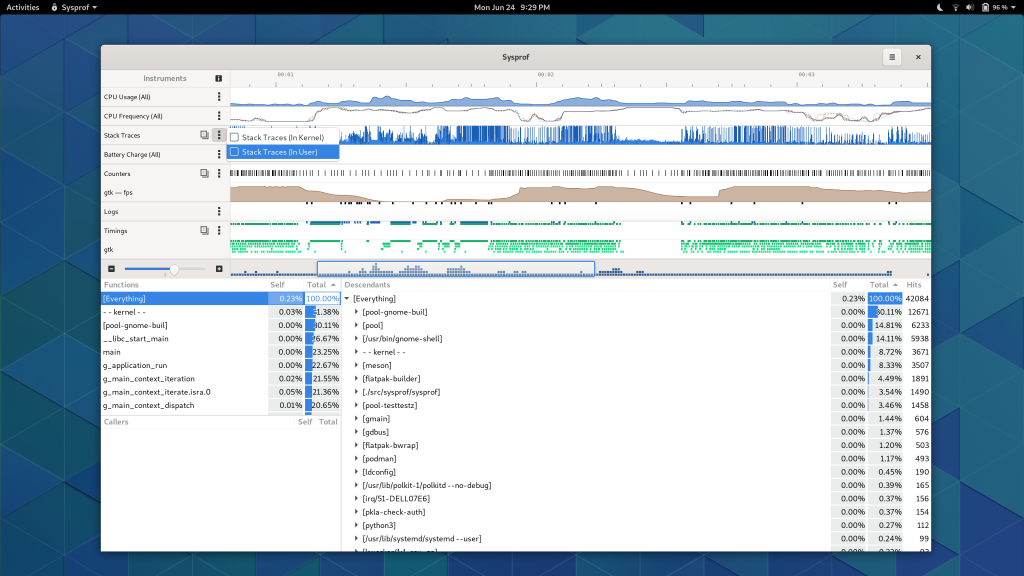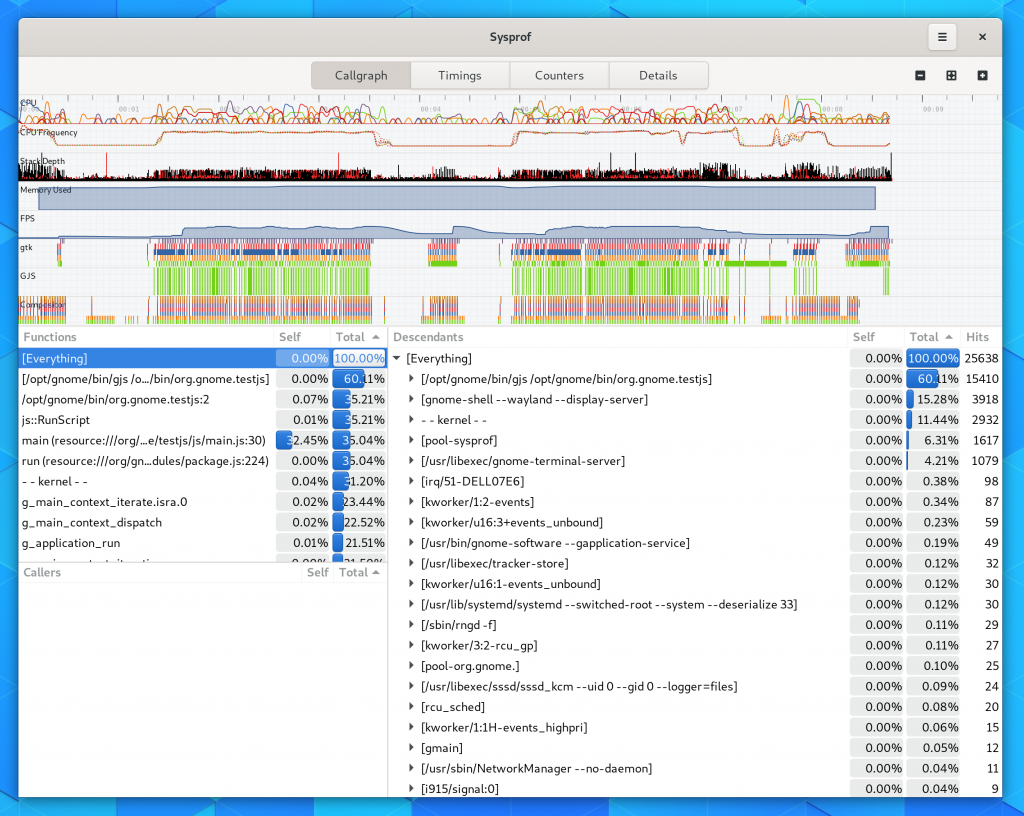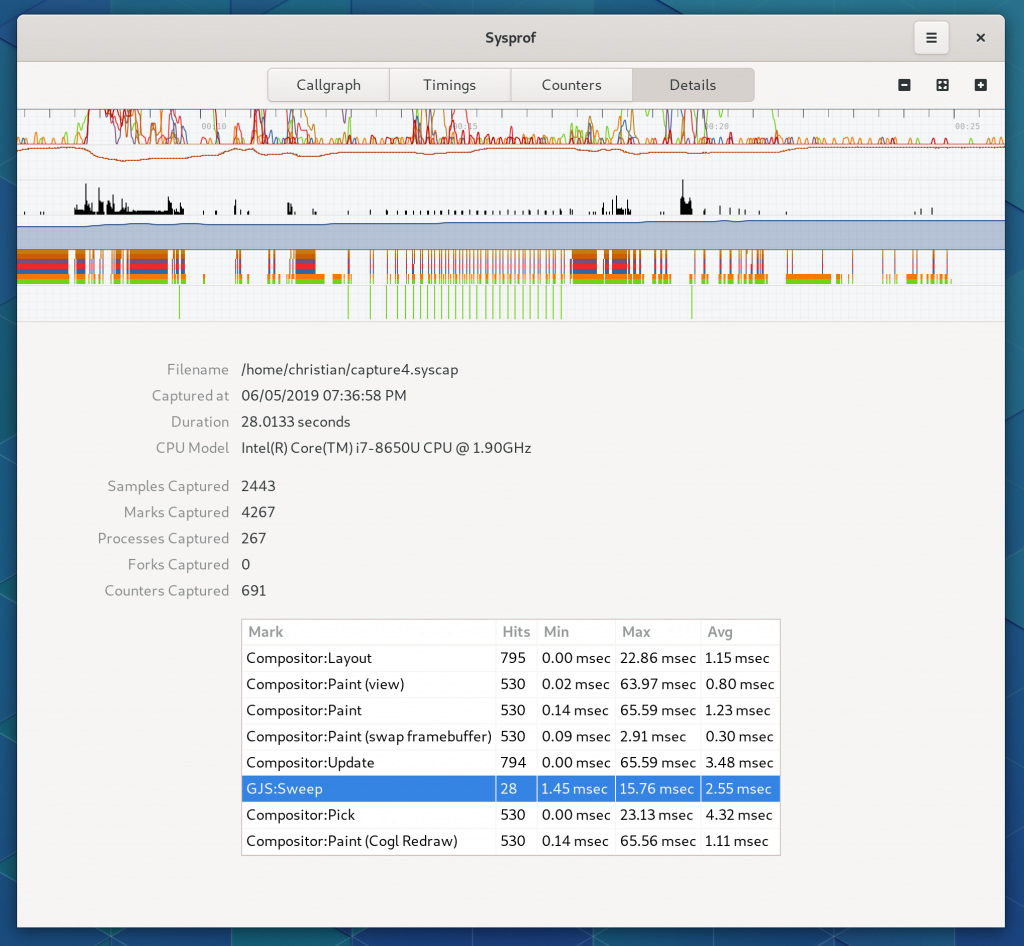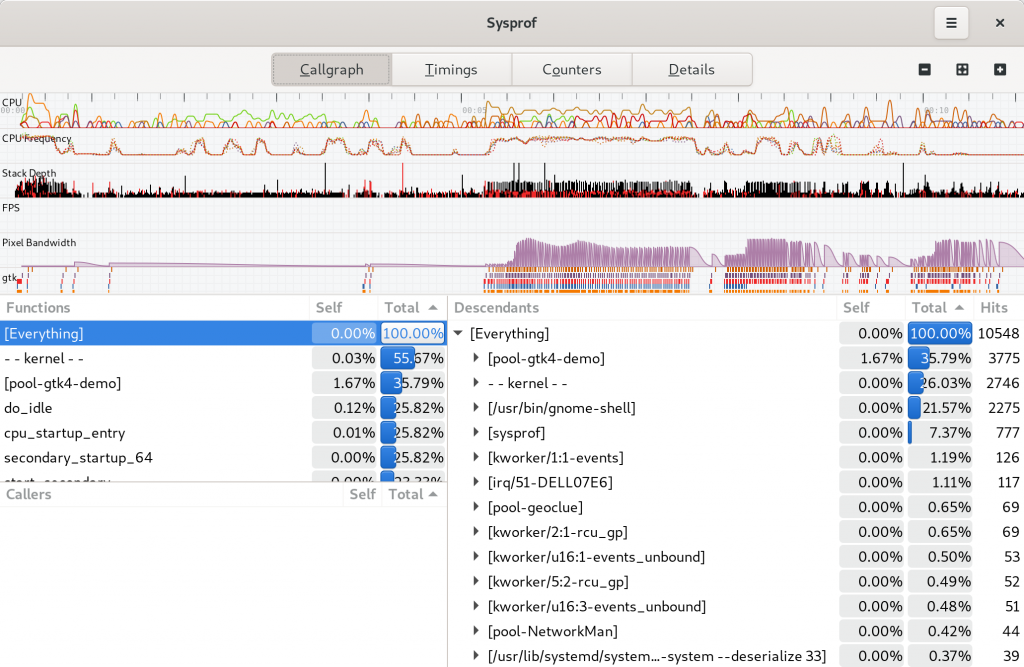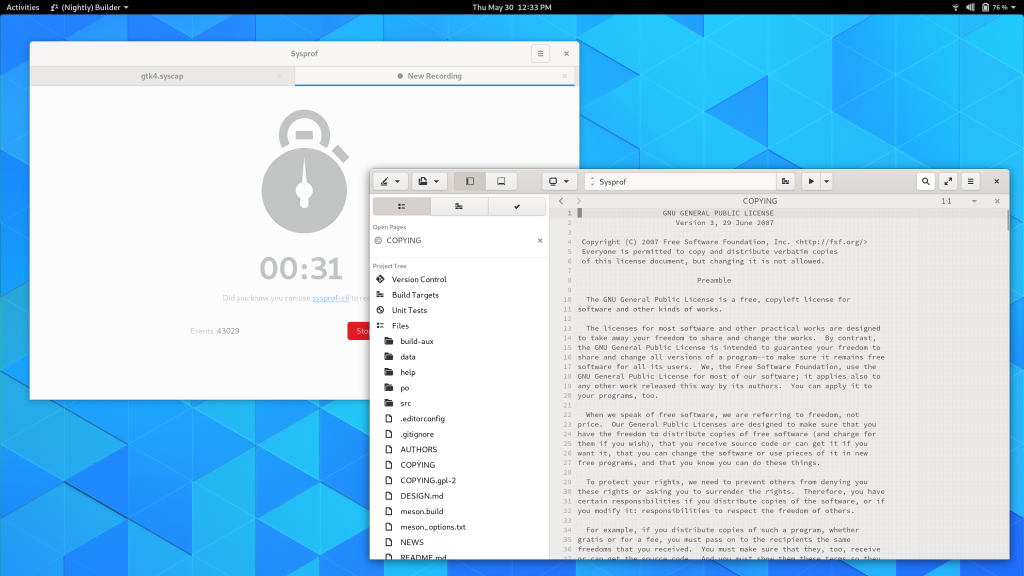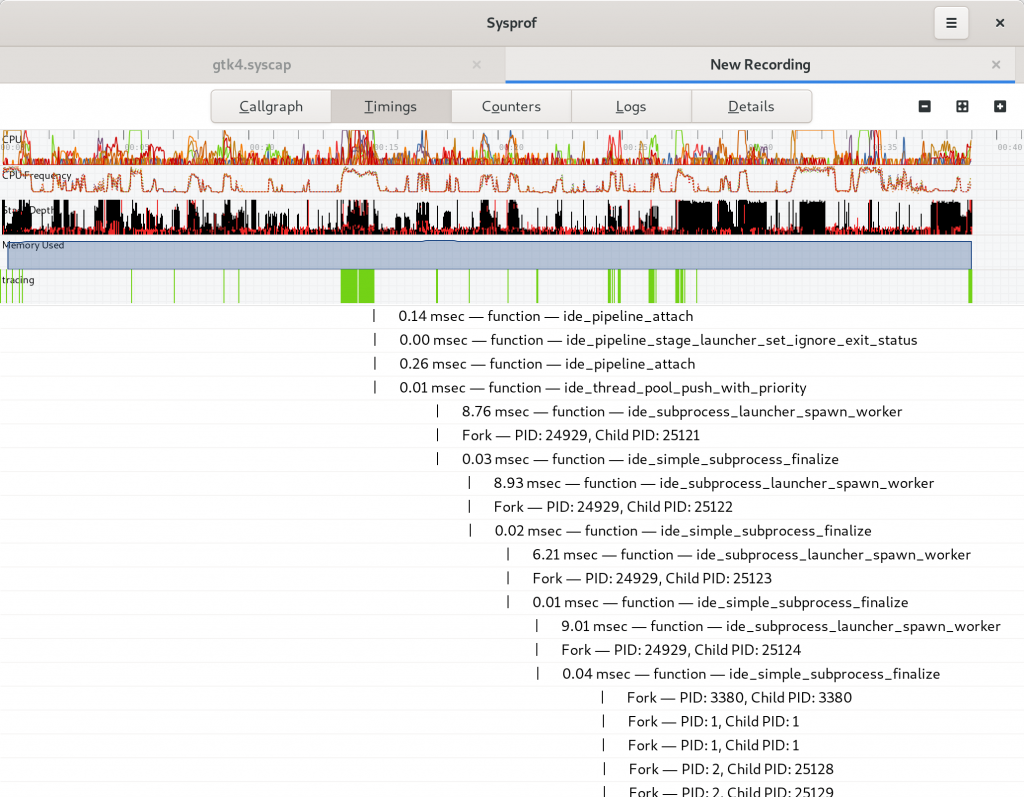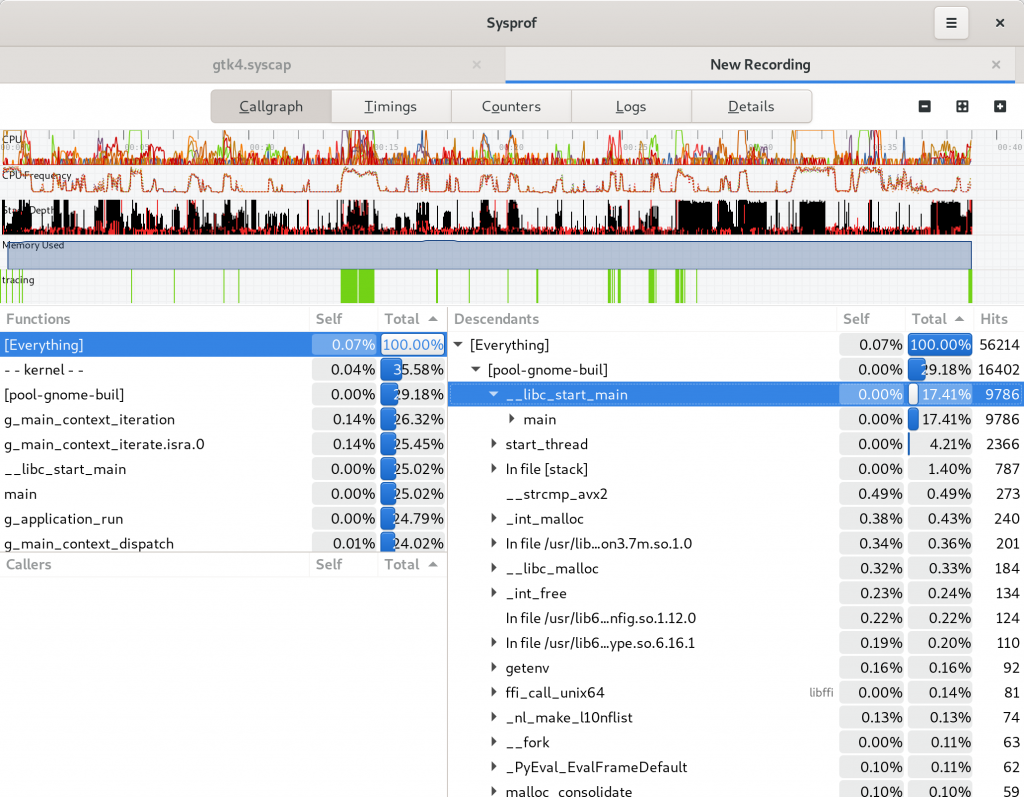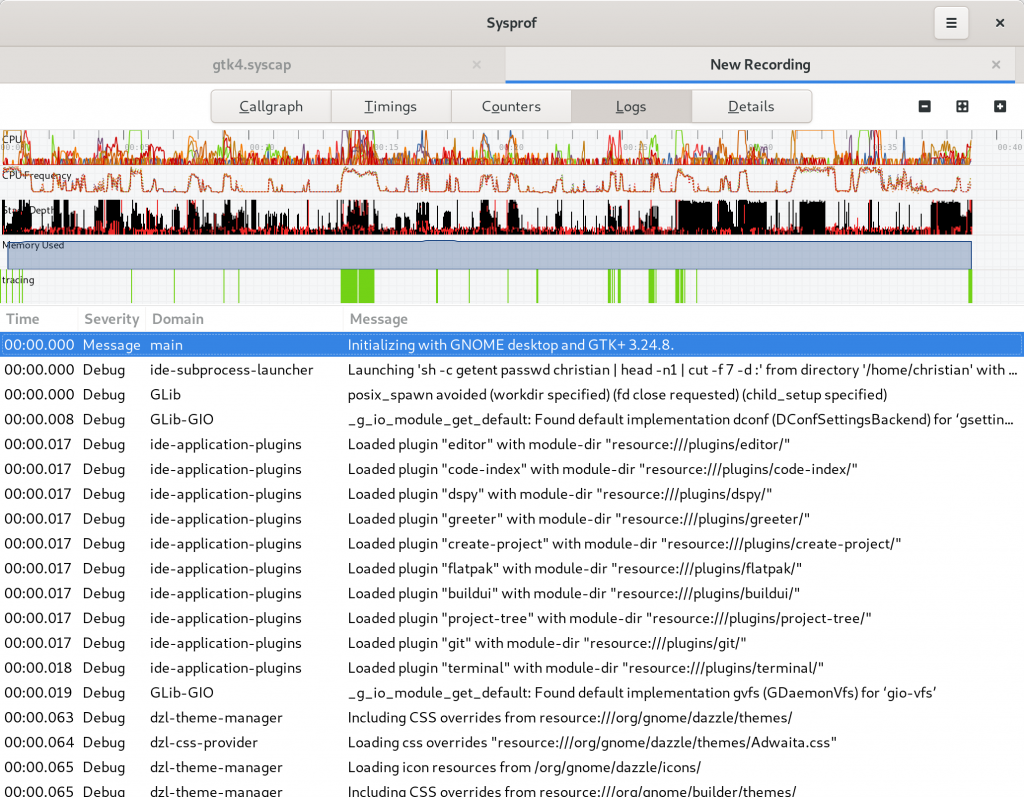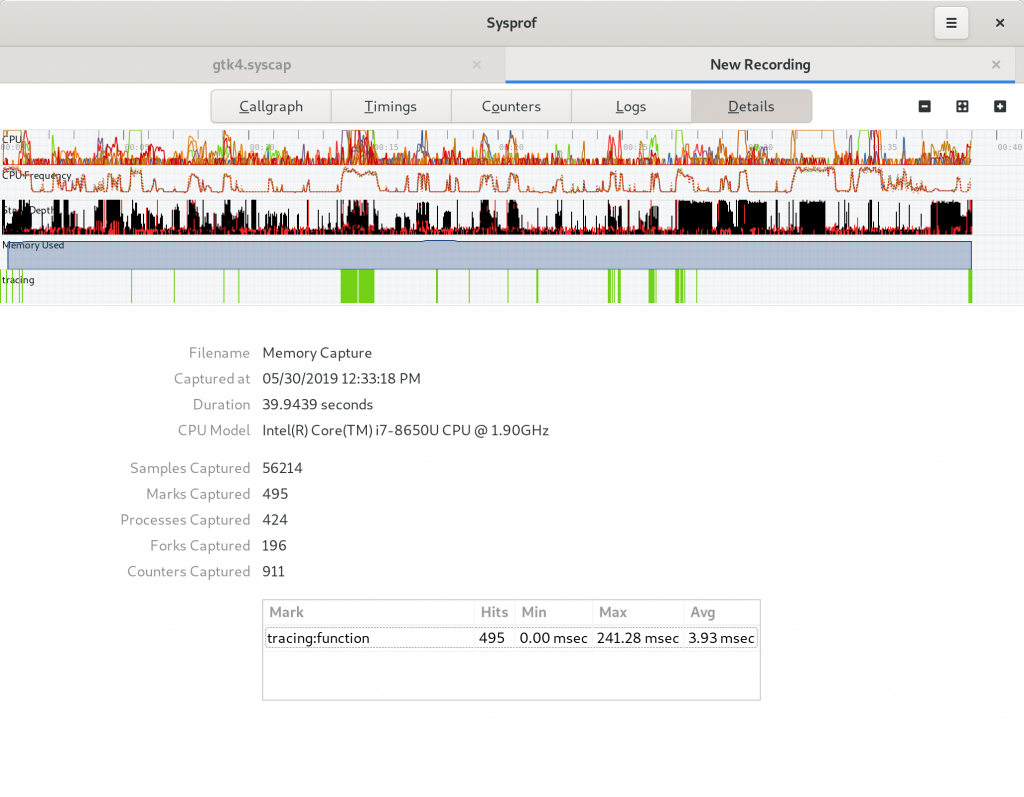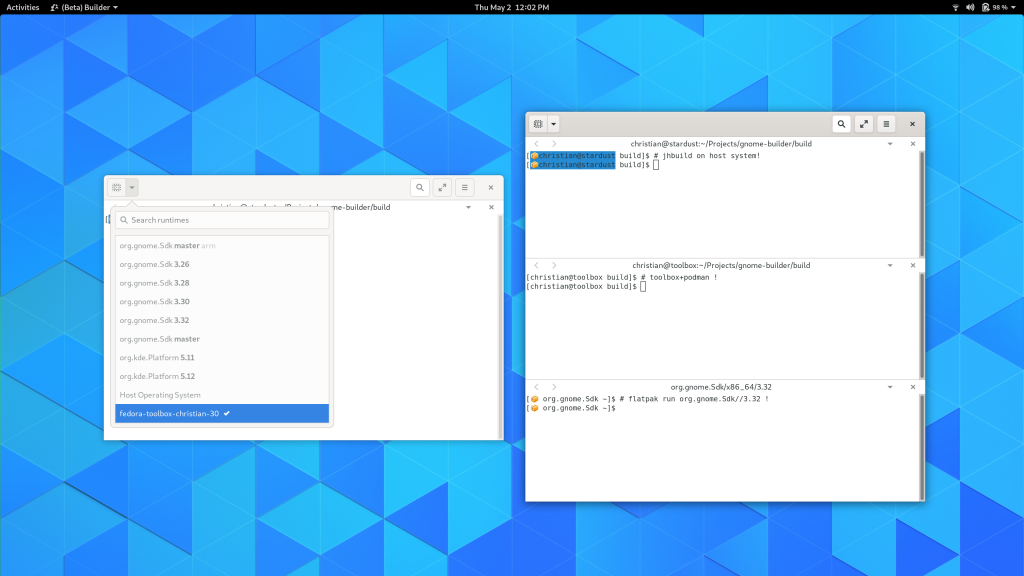I spent some time this cycle porting GtkSourceView to GTK 4. It was a good opportunity to help me catch up on how GTK 4’s internals have changed into something modern. It gave me a chance to fix a few pot-holes along the way too.
One of the pot-holes was one I left in GtkTextView years ago. When I plumbed the pixelcache into GTK 3’s TextView I had only cached the primary text content. It seemed fine at the time because the gutters (used for line numbers) is just not that many pixels. So if we have to re-generate that every frame, so be it.
However, in a HiDPI world and 4k monitors on our laps things start to get… warm. So while changing the drawing model in GtkTextView we decided to make the GtkTextView gutters real widgets. Doing so means that GtkSourceGutterRenderer will be real GtkWidget‘s going forward and can do all sorts of neat stuff widgets can do.
But to address the speed of rendering we needed a better way to avoid walking the text btree linearly so many times while rendering the gutter. I’ve added a new class GtkSourceGutterLines to allow collecting information about the text buffer in one-pass. The renderers can then use that information when creating render nodes to avoid further tree scans.
I have some other plans for what I’d like to see before a 5.0 of GtkSourceView. I’ve already written a more memory-compact undo/redo engine for GTK’s GtkTextView, GtkEntry, GtkText, and friends which allowed me to delete that code from the GtkSourceView port. Better yet, you get undo/redo in all the places you would, well, expect it.
In particular I would like to see the async+GListModel based API for completion from Builder land upstream. Builder also has a robust snippet engine which could be reusable from GtkSourceView as that is a fairly useful thing across editors. Perhaps we could extract Builder’s indenter APIs and movements engine too. These are used by Builder’s Vim emulation quite heavily, for example.
If you like following development of stuff I’m doing you can always get that fix here on Twitter given my blogging infrequency.



